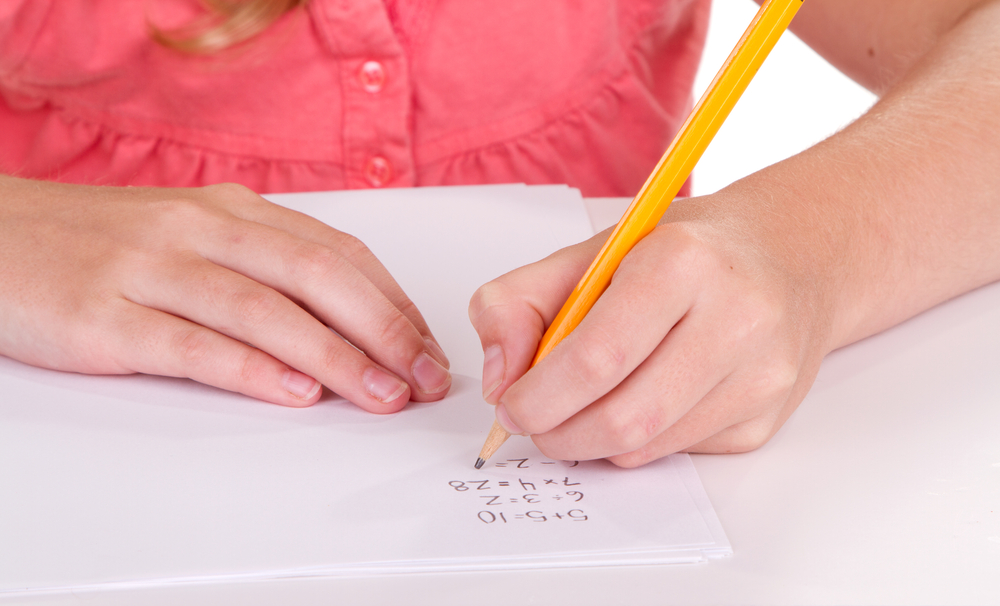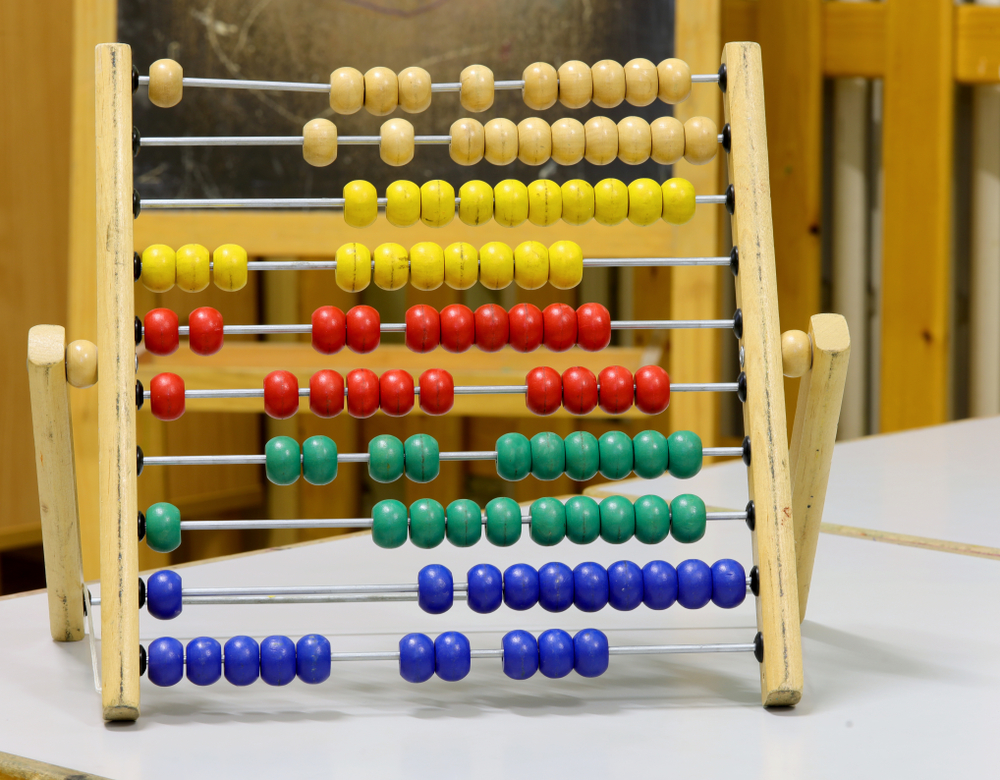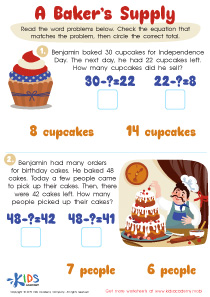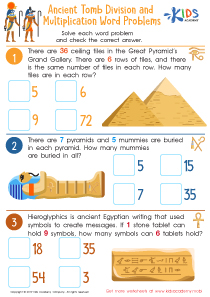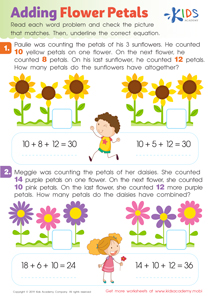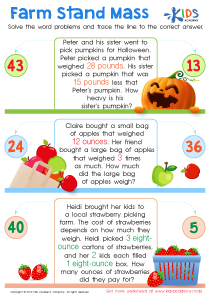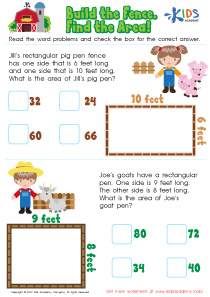Grade 3 Time Word Problems Worksheets
1 filtered results
-
From - To
Introduce your Grade 3 students to the engaging world of time management with our Time Word Problems worksheets. These educational homework sheets are expertly designed to strengthen your child's time-telling skills and their ability to solve practical problems related to scheduling, duration, and time estimation. Each worksheet is filled with a variety of questions that make learning both fun and challenging. Perfect for classroom activities or home practice, these worksheets will help children master the concepts of time in a contextual and enjoyable way. Equip your students with the tools they need for future success in everyday time management and planning!
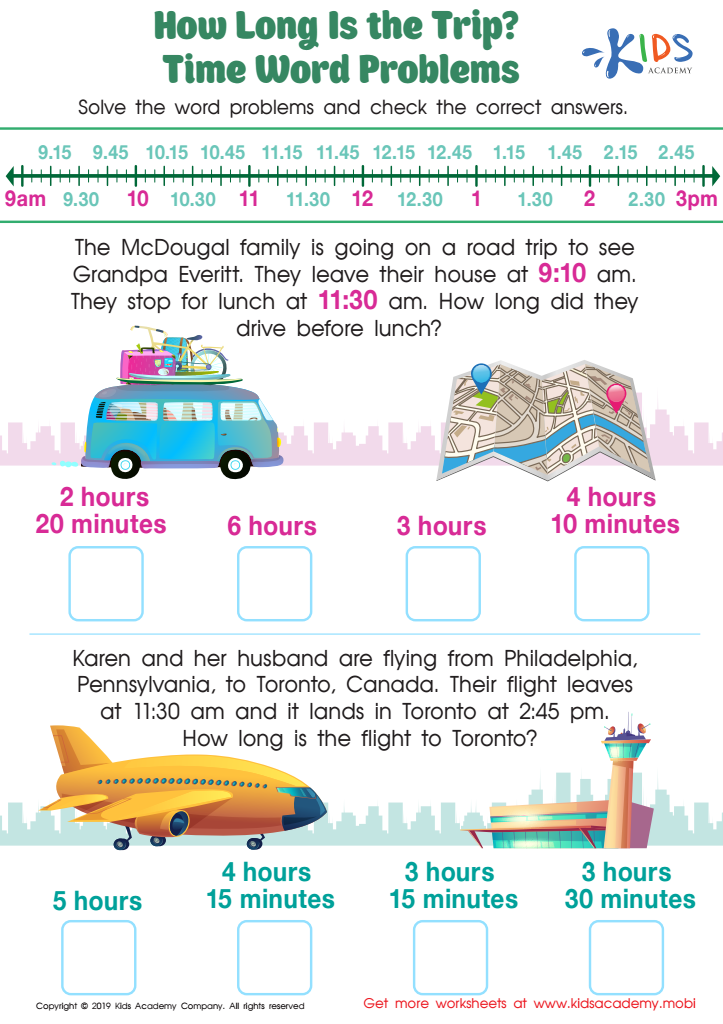

How long is the Trip? Time Word Problems Worksheet
School worksheets focused on Time Word Problems are an essential tool in the educational journey of Grade 3 students. These worksheets are strategically designed to address several fundamental skills that are crucial not only in math but in daily life. Engaging children with these worksheets helps deepen their understanding of time management, scheduling, and problem-solving, which are vital skills in both academic and real-world contexts.
First and foremost, Time Word Problems school worksheets enhance a student’s ability to perform basic arithmetic operations within a practical framework. At the Grade 3 level, children are generally familiar with the concepts of hours, minutes, and seconds. Worksheets that frame questions around these units in real-life scenarios, such as calculating the duration of events or finding the start or end time of activities, make the learning process relevant and relatable. This not only keeps students engaged but also helps them see the practical application of their classroom learning.
Moreover, Time Word Problems are excellent for improving critical thinking and reasoning skills. When faced with a problem where they have to calculate how long a trip took or determine when they need to leave home to get to school on time, students are compelled to think critically. They must understand the problem, break it down into manageable parts, and use their knowledge of time to find solutions. This process enhances their analytical skills, which are fundamental in all areas of education.
Another significant benefit of using Time Word Problems worksheets is the development of time management skills. By solving these problems, children learn about the importance of time, how it can be allocated, and the consequences of its management. For example, a worksheet might ask students to schedule three different activities within a given period. To successfully complete the task, they must understand how long each activity lasts and ensure that it fits the schedule without overlapping. Such exercises teach students about prioritizing tasks and managing their time efficiently, which are essential skills as they progress in their academic and personal lives.
Furthermore, these school worksheets are pivotal in enhancing a child's numerical literacy. Time Word Problems require students to read, interpret, and manipulate numerical data. Through regular practice, children become more comfortable with numbers and develop confidence in their mathematical abilities. This confidence can translate into better performance in other mathematical areas and reduce anxiety associated with math-related tasks.
Additionally, Time Word Problems foster real-world applicability of mathematics. Children often question the relevance of what they learn in school to their everyday lives. By using time-based scenarios that might occur in their own experiences, such as figuring out the length of television shows or planning a family outing, worksheets connect classroom lessons to outside-the-classroom realities. This connection not only enhances engagement but also fosters a deeper appreciation for mathematics as a useful tool in everyday decision-making.
Moreover, Time Word Problems encourage collaborative learning. These types of problems often lend themselves well to group activities where students can work together, share different solving strategies, and discuss their reasoning. This kind of peer interaction is crucial for social learning and helps students learn to communicate their mathematical thinking effectively. School worksheets often facilitate this by providing structured ways for students to engage with each other over common academic challenges.
Regular practice with Time Word Problems also prepares students for more advanced concepts in future grades. Concepts such as rate, speed, and even basic algebra are rooted in the foundational understanding of how time works. By mastering time calculations early on, students are better poised to tackle more complex mathematical theories and problems as they advance in their educational journey.
To ensure that these benefits are realized, it is crucial that Time Word Problems worksheets are well-designed. They should offer a variety of problems that cater to different learning paces and styles. Including a range of problem types—from simple calculations to multi-step reasoning problems—ensures that all students find something that challenges them appropriately. Also, the context of problems should be diverse and inclusive, reflecting scenarios from a wide array of cultures and lifestyles to ensure every student can relate in some way.
In conclusion, Time Word Problems school worksheets are invaluable for Grade 3 students as they build not only mathematical skills but also life skills such as time management, problem-solving, and critical thinking. These worksheets help bridge the gap between theoretical math and practical application, making learning a more engaging, relatable, and effective process. As such, they are an essential part of the curriculum, aiding in the holistic development of young learners, preparing them not just for the next grade, but for life.
 Assign to the classroom
Assign to the classroom
